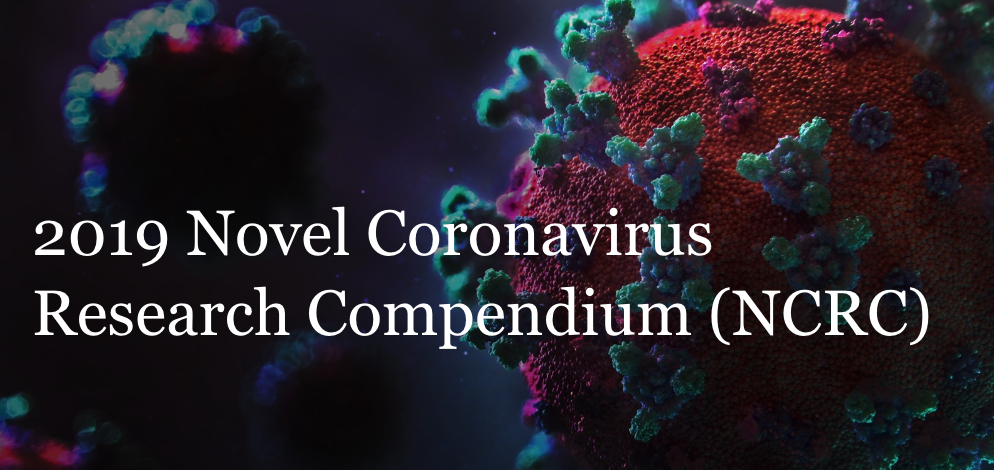Safety and immunogenicity of a recombinant tandem-repeat dimeric RBD-based protein subunit vaccine (ZF2001) against COVID-19 in adults: two randomised, double-blind, placebo-controlled, phase 1 and 2 trials
This article has been Reviewed by the following groups
Discuss this preprint
Start a discussion What are Sciety discussions?Listed in
- Evaluated articles (ScreenIT)
- Evaluated articles (NCRC)
- High interest articles (NCRC)
Abstract
Article activity feed
-
-

SciScore for 10.1101/2020.12.20.20248602: (What is this?)
Please note, not all rigor criteria are appropriate for all manuscripts.
Table 1: Rigor
Institutional Review Board Statement Consent: All participants provided written informed consent before enrollment in the trial.
IRB: The trial protocol was approved by the institutional review board of The Second Affiliated Hospital of Chongqing Medical University, Beijing Chao-Yang Hospital of Capital Medical University, Hunan Provincial Center for Disease Control, Prevention and National Medical Products Administration (NMPA), China and was performed in accordance with the Declaration of Helsinki and Good Clinical Practice.Randomization The trial was designed with double-blind, randomized and placebo-parallel-controlled. Blinding These randomisation statisticians were not allowed to participate in … SciScore for 10.1101/2020.12.20.20248602: (What is this?)
Please note, not all rigor criteria are appropriate for all manuscripts.
Table 1: Rigor
Institutional Review Board Statement Consent: All participants provided written informed consent before enrollment in the trial.
IRB: The trial protocol was approved by the institutional review board of The Second Affiliated Hospital of Chongqing Medical University, Beijing Chao-Yang Hospital of Capital Medical University, Hunan Provincial Center for Disease Control, Prevention and National Medical Products Administration (NMPA), China and was performed in accordance with the Declaration of Helsinki and Good Clinical Practice.Randomization The trial was designed with double-blind, randomized and placebo-parallel-controlled. Blinding These randomisation statisticians were not allowed to participate in other related work of these clinical trials and not allowed to disclose the blind code to any personnel participating in this clinical trial. Power Analysis Statistical analysis: Based on clinical consideration and recommendation of pilot trial and technical guideline issued by the NMPA in China, the sample sizes for two trials were practical, and were not determined on a formal statistical power calculation. Sex as a biological variable Eligible participants were healthy men and nonpregnant women, 18 to 59 years of age. Table 2: Resources
Software and Algorithms Sentences Resources Randomisation and masking: The randomisation statisticians used SAS statistical software (version 9.4) to generate the random table of participants in each dose group. SASsuggested: (SASqPCR, RRID:SCR_003056)Statistical analyses were using SAS (version 9.4) and GraphPad Prism (version 8.0.1). GraphPad Prismsuggested: (GraphPad Prism, RRID:SCR_002798)Results from OddPub: We did not detect open data. We also did not detect open code. Researchers are encouraged to share open data when possible (see Nature blog).
Results from LimitationRecognizer: We detected the following sentences addressing limitations in the study:This trial report has several limitations. First, the participants in both trials were young adults aged from 18-59, not including juvenile and elderly persons, whereas, the elderly is more vulnerable to SARS-CoV-2. Moreover, the participants had limited ethnic diversity, mainly the ethnic Han. These limitations will be addressed by our outreach study for cohort covering broader age range and ethnic backgrounds. Second, the immunogenicity was tested at day 30 post full vaccination in phase 1 and day 14 post full vaccination in phase 2, which cannot be assessed for the duration of the immune response. Immune responses at later timepoints including those at least 6 months post vaccination will be obtained in the follow-up visits and investigation. Third, there was still no benchmark to evaluate protective immune responses against COVID-19. Therefore, although ZF2001 induced neutralizing GMTs higher than the convalescent samples, it is yet hard to predict its protective efficacy. Since no participant had SARS-CoV-2 exposure, we were unable to assess the protective efficacy and vaccine-associated enhanced diseases at this moment. This limitation will be addressed in the ongoing international multi-center phase 3 trials.
Results from TrialIdentifier: We found the following clinical trial numbers in your paper:
Identifier Status Title NCT04445194 Active, not recruiting Phase I Clinical Study of Recombinant Novel Coronavirus Vacc… NCT04466085 Active, not recruiting Clinical Study of Recombinant Novel Coronavirus Vaccine NCT04646590 Recruiting A Phase III Clinical Trial to Determine the Safety and Effic… Results from Barzooka: We found bar graphs of continuous data. We recommend replacing bar graphs with more informative graphics, as many different datasets can lead to the same bar graph. The actual data may suggest different conclusions from the summary statistics. For more information, please see Weissgerber et al (2015).
Results from JetFighter: We did not find any issues relating to colormaps.
Results from rtransparent:- Thank you for including a conflict of interest statement. Authors are encouraged to include this statement when submitting to a journal.
- Thank you for including a funding statement. Authors are encouraged to include this statement when submitting to a journal.
- No protocol registration statement was detected.
-

Our take
This study, available as a preprint and thus not yet peer reviewed, includes both phase 1 and phase 2 clinical trial data demonstrating the safety and immunogenicity of ZF2001, a vaccine manufactured by Anhui Zhifei Longcom Biopharmaceutical. This is the first clinical data reported for an RBD-based protein subunit vaccine for COVID-19. The vaccine was well tolerated and immunogenic. The data strongly support continued studies in phase 3 trials. Phase 3 trials are ongoing with a 25 ug, 3-dose regimen.
Study design
randomized-controlled-trial
Study population and setting
Reported are results from phase 1 and phase 2 clinical trials of a SARS-CoV-2 S protein receptor-binding domain (RBD)-based protein subunit vaccine against COVID-19, ZF2001, manufactured by Anhui Zhifei Longcom …
Our take
This study, available as a preprint and thus not yet peer reviewed, includes both phase 1 and phase 2 clinical trial data demonstrating the safety and immunogenicity of ZF2001, a vaccine manufactured by Anhui Zhifei Longcom Biopharmaceutical. This is the first clinical data reported for an RBD-based protein subunit vaccine for COVID-19. The vaccine was well tolerated and immunogenic. The data strongly support continued studies in phase 3 trials. Phase 3 trials are ongoing with a 25 ug, 3-dose regimen.
Study design
randomized-controlled-trial
Study population and setting
Reported are results from phase 1 and phase 2 clinical trials of a SARS-CoV-2 S protein receptor-binding domain (RBD)-based protein subunit vaccine against COVID-19, ZF2001, manufactured by Anhui Zhifei Longcom Biopharmaceutical. Both trials were randomized, double-blinded, and placebo-controlled. The phase 1 study enrolled 50 healthy adults, aged 18-59 into one of three groups: 25 ug vaccine, 50 ug vaccine, or placebo. All groups were administered 3 doses 30 days apart. The primary endpoint was safety, with the secondary endpoint of immunogenicity. Phase 2 studies enrolled 900 participants and included six groups, with three groups receiving 3 doses of either 25 ug vaccine, 50 ug vaccine, or placebo, and 3 groups receiving 2 doses of either 25 ug vaccine, 50 ug vaccine, or placebo. Primary endpoints were safety and immunogenicity. In both studies, samples were taken at determined intervals to assess immunogenicity. Both trials were conducted in China, with phase 1 in Chongqing and Beijing, and Phase 2 in Xiangtan.
Summary of main findings
All vaccine regimens were well tolerated. Local adverse events included pain, swelling, induration, redness, rash and pruritus. Systemic adverse events included fever, cough, dyspnea, diarrhea, anorexia, nausea, vomiting, muscle pain other than the injection site, arthritis, joint pain, headache, fatigue, acute allergic reaction, irritation or inhibition, and mental disorder. No vaccine-related serious adverse events were reported. In the phase 1 study, 61% (25 ug group) and 79% (50 ug group) of participants had seroconverted by day 30 post-first dose and 100% of both groups had seroconverted by day 30 post-second dose. In the phase 2 study, 59-65% seroconverted by day 30 post-first vaccination, 94%-97% at 30 days post-second vaccination, and 97%-99% at 14 days post-third dose. However, for all vaccine groups in both phase 1 and phase 2 studies, neutralizing titers were only similar to or better than convalescent patient serum at time points following the third dose. There was no significant enhancement of neutralizing titers in the 50 ug groups compared to the 25 ug groups. T-cell responses were also observed in all vaccine groups with no significant difference between groups. Maximal responses first observed at 30 days post-second dose.
Study strengths
Demonstration of neutralizing antibodies titers elicited by this vaccine equal to or greater than convalescent plasma is positive. While a correlate of protection has not been determined for SARS-CoV-2, to date, vaccines that have been issued an emergency use authorization (EUA) have demonstrated neutralizing titers similar to or better than convalescent plasma.
Limitations
While demonstrating that ZF2001 can elicit a T-cell response is positive, it is not clear what type or level of response is needed to confer protection against disease. This study did not include elderly populations and has very limited population diversity. Also, duration of the immune response is not tested past 30 days post-third dose. These limitations will be addressed in the ongoing phase 3 trial. The data indicate that the immune response is greatly boosted with the 3rd vaccination, thus a 25 ug, 3-dose regimen will be used in the phase 3 trial. A 3-dose vaccine regime could prove to be logistically difficult in some areas and compliance may be lower than the current 2-dose regimens for other vaccines already in use under EUA.
Value added
This is the first clinical data reported for an RBD-based protein subunit vaccine for COVID-19. The vaccine was well tolerated and immunogenic. The data strongly support continued studies in phase 3 trials.
-


